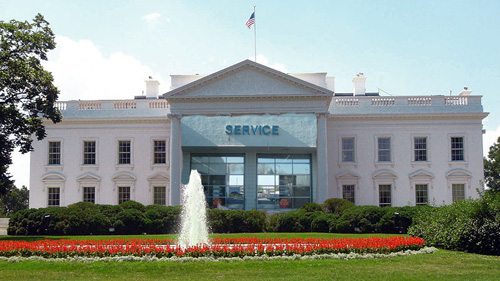I hate politics. But, when a politician starts to sound like a car salesman instead of the leader of the free world, it tends to get my attention.
In a March 30th press conference announcing the findings of the Automotive Task Force, President Obama said, “Your warranty will be safe. In fact, it will be safer than it’s ever been, because starting today, the United States government will stand behind your warranty.”
 The broad statement is intended to give consumers confidence in the purchase of a GM or Chrysler vehicle. But, to some in the vehicle service industry, it is both scary and intriguing at the same time.
The broad statement is intended to give consumers confidence in the purchase of a GM or Chrysler vehicle. But, to some in the vehicle service industry, it is both scary and intriguing at the same time.
Any technician or service writer with a little new car dealer experience can tell you the pitfalls of performing warranty and recall work. The thought of getting the government involved in this type of work has some rolling on the floor laughing or crying.
The new program is nothing more than statements in a speech right now, but has the potential to change the aftermarket. After President Obama made his speech, www.whitehouse.gov posted further information on the website.
The statement outlined the finical mechanism of the plan. The government funded program will create a separate account that will be funded with cash contributed by the manufacturer and a loan from the U.S. Government to pay for repairs covered by the manufacturer’s warranty on each new vehicle sold by a participating domestic auto manufacturer during its restructuring period. The cash contribution will be 125% of the costs projected by the manufacturer to satisfy anticipated claims under the warranty issued on that vehicle.
In the event of a failure of an automaker, an appointed program administrator who, together with the U.S. Government, will identify an auto service provider to supply warranty services. Later in the statement, there is a paragraph that should get any repair shop owner scratching their head:
“Government will conduct a process to identify a qualified third party warranty service provider to assume responsibility for all of the manufacturer’s warranties covered by the program, in exchange for the assets of the program. Because of the significant funding of the reserve account, the Treasury is confident that qualified third parties will be interested in taking over the warrantee obligations.”
Who is a “qualified third party warranty service provider?” Are they talking about a company to administrate the fund and pay the checks to shops like existing warranty programs? Or, are they planning to have a contractor create a brand new infrastructure and service centers to handle the warranty and service work? Where are the parts going to come from? Who will write the technical service bulletins?
I think the 60-word paragraph is intentionally vague. Either they are hoping GM or Chrysler will not go under, or they have no clue how they are going to administrate such an epic program.
The worse case scenario would be if the government gave the money to a contractor who intended to build brand new infrastructure to handle the warranty work, like a Rayteon or Halliburton. Or, the program could be set up like Medicaid or Medicare where small doctors offices, or in this case repair shops, would handle the work.
Either way, the trade associations that represent the aftermarket in Washington should stand up and say the aftermarket and shop owners are here to help if such an unfortunate event happens. With more than 140,000 locations, we would able to do the work during and after the warranty period — just give us the tools and information.











